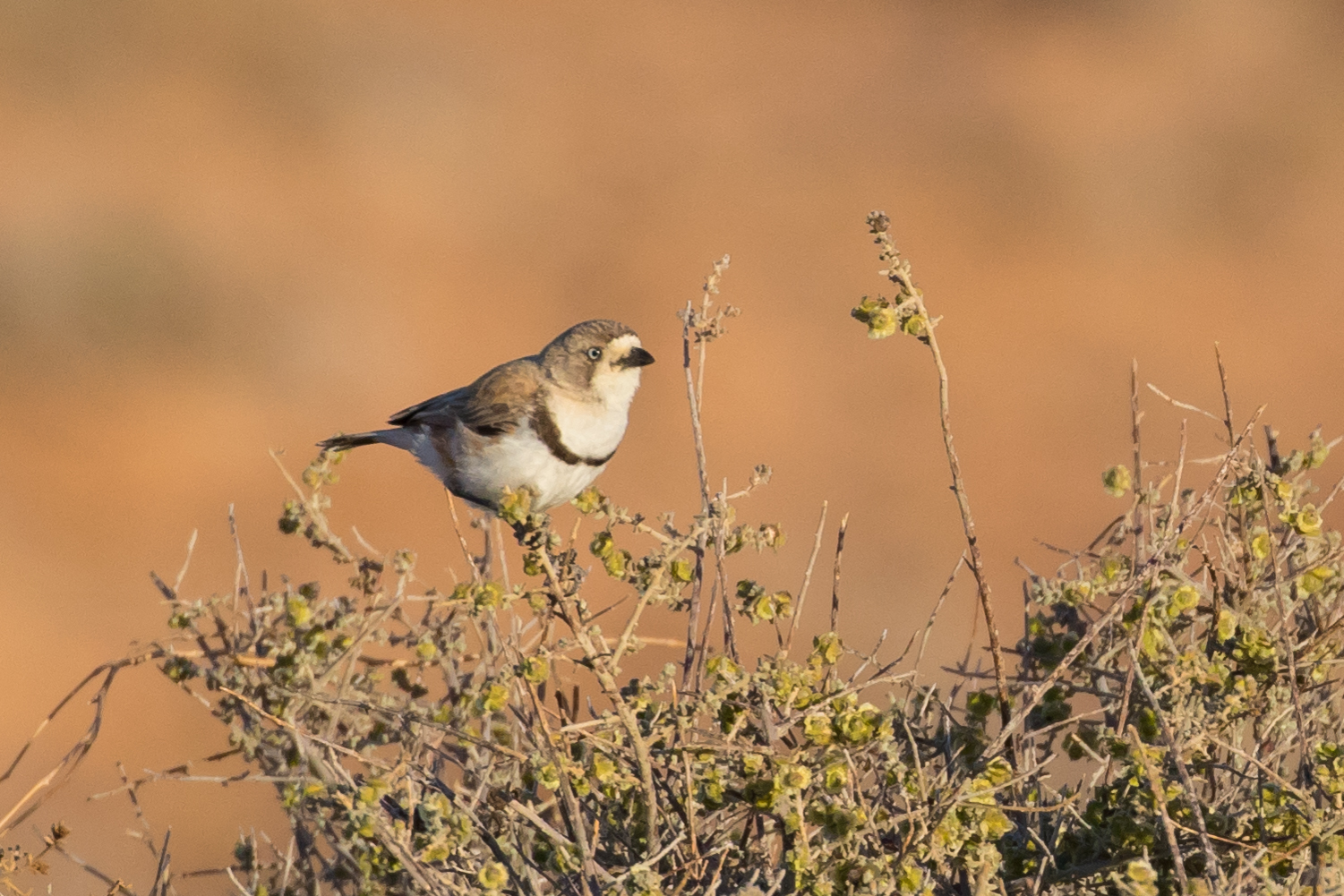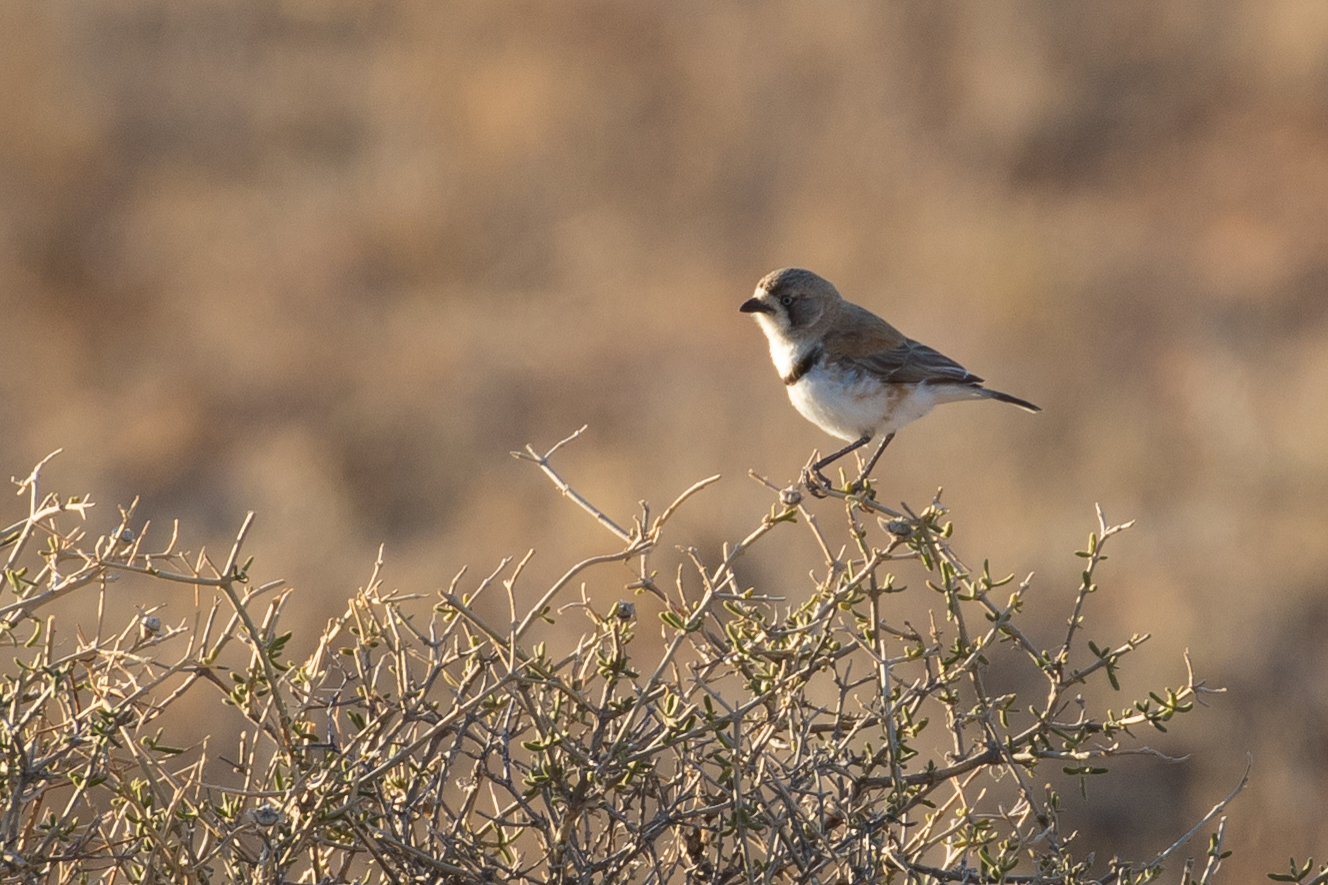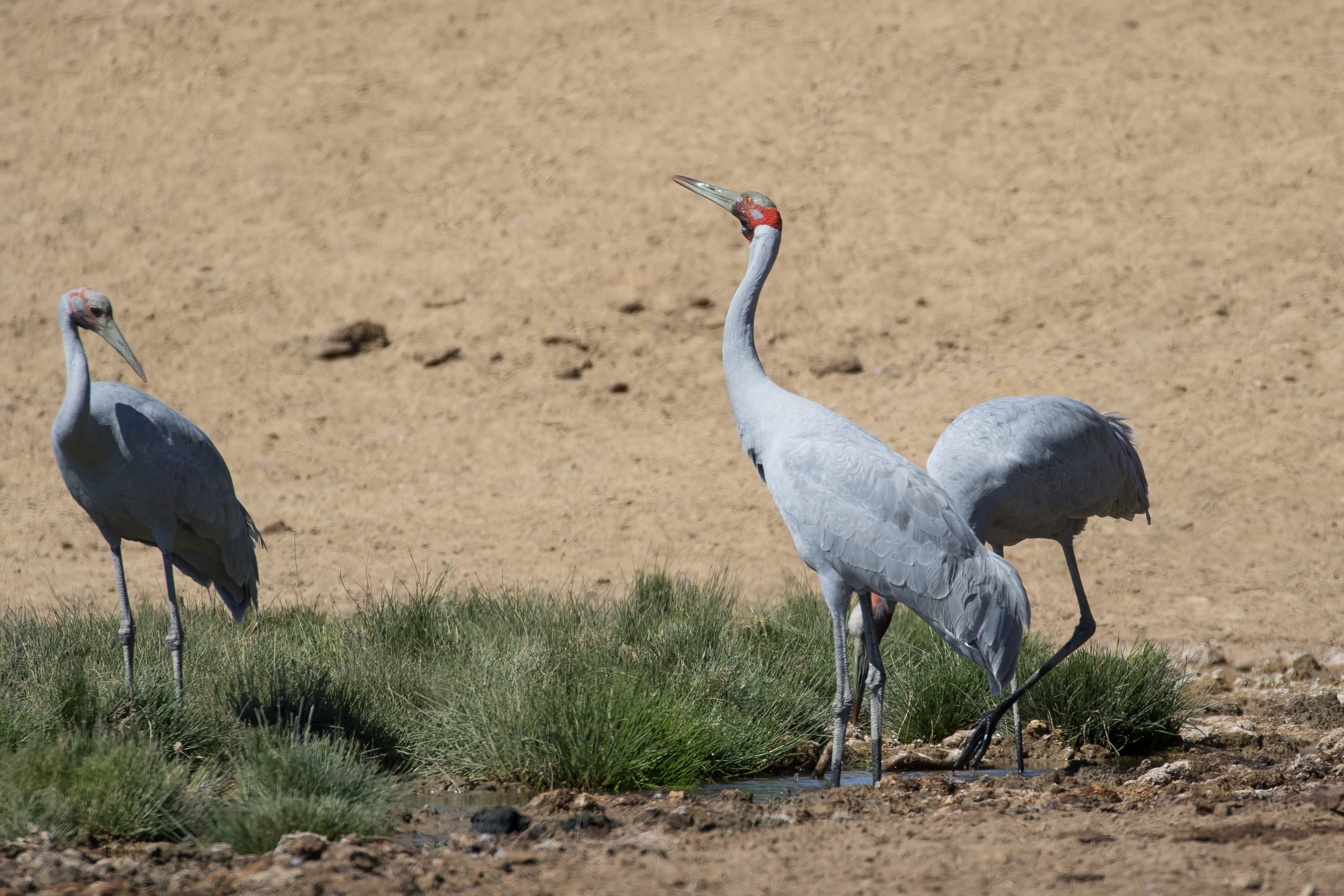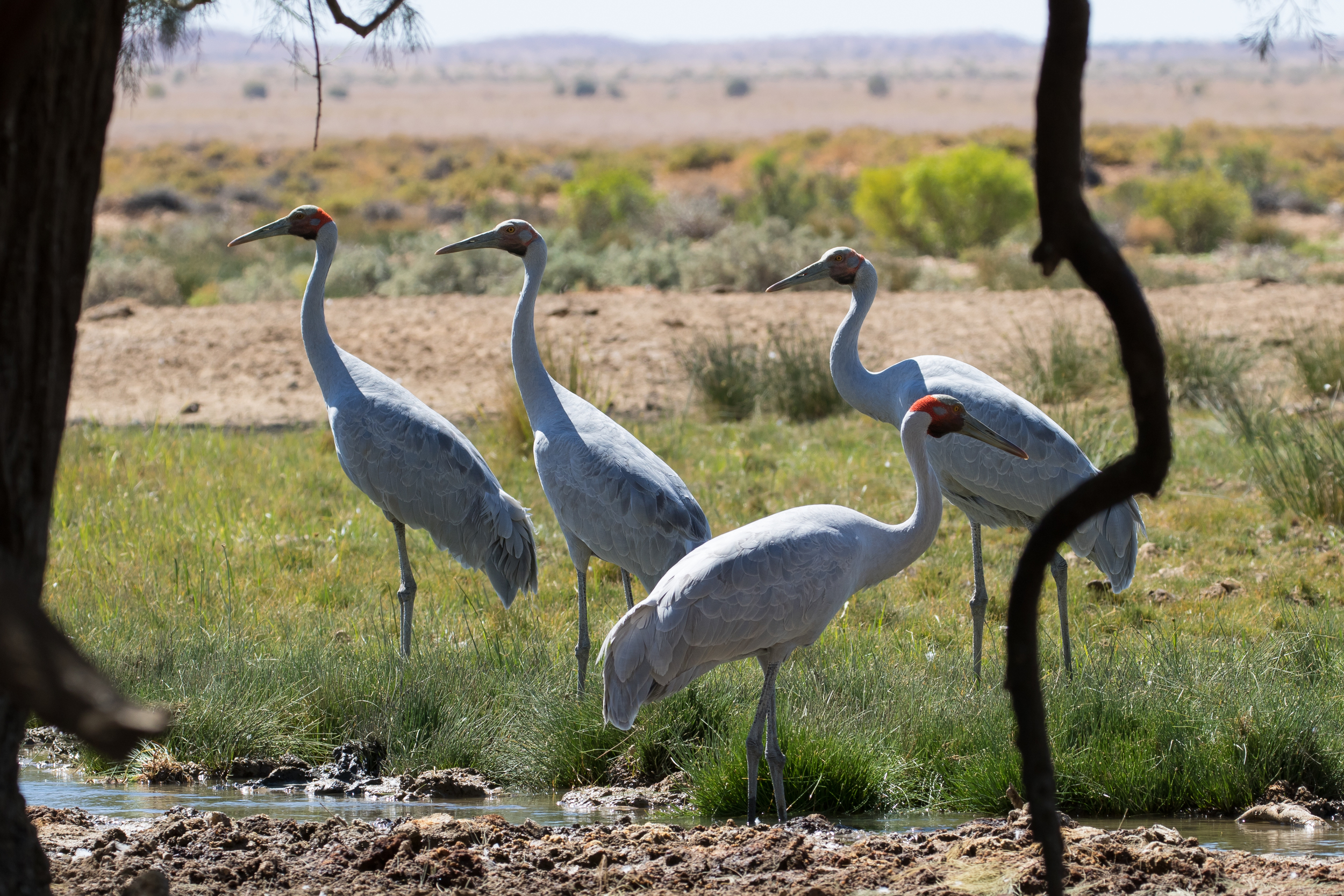Day 3, Mungerannie to Pandiburra
At 5am a flock of around 200 Galahs descended onto some dead trees above our camp and brought our slumber to an abrupt and somewhat premature halt. I made a cup of tea and then just as we were about to head off I heard a weird honking that just kept getting louder. All of a sudden a pair of Brolgas flew almost directly over us and I kicked myself for not recognising the distinctive sound of cranes in flight.
First up on today’s agenda was a recce of the Kalamurina Rd that heads north-west about a km north of Mungerannie. Recent ebird reports suggested Banded Whiteface can be found there, and we both needed this for SA.
The track was in pretty good nick and we cruised along it stopping occasionally at good looking gibber and scanning, hoping for Gibberbird, but we were out of luck on that score.
About 13km along, just short of yet another comms tower, I saw some movement just off the road and stopped, thinking I’d just seen a Cinnamon Quail-thrush. One answered our recording from a distance, but we decided it was too far away to chase. However, within seconds at this same spot we had tracked down a cracking Banded Whiteface that posed nicely in the cool morning light — only my second ever. We both fired off several shots, though on reviewing his later Paul would make an embarrassing discovery: his settings were all wrong and his pictures completely dark.
Having cracked open the Jelly Snakes for a now customary lifer celebration (we allowed ourselves to stretch the definition to state tick — it was our own tradition after all), we drove back towards Mungerannie, still scanning the roadsides and gibber for chats. Suddenly I spied movement on the left of the track and saw several small-but-stocky brown bodied scuttle off the track: “Inland Dotterel” I announced immediately. We jumped out of the car and skirted around the group of about 14 birds at a safe distance to get the sun behind us for photographs. Sadly they proved too flighty with two 6-foot+ dudes bearing down on them, and each time we got to a sensible range they would scuttle a little further away. Prone on the gibber I eased forward on elbows and knees hoping I could close the gap this way, but rapidly gave up – it was painful and felt like a very low probability option.
Instead we tried something of a pincer movement but only succeeded in driving them across the track. I now sensed an opportunity – a small sandy gully indented in the gibber seemed to provide a modicum of cover and would be much more comfortable to slide long. Once again I prostrated myself on the ground and began to creep forward. This worked for a while but then they got wise and scuttled further out onto some open gibber. They didn’t go far though, and by pulling myself up over the lip of the gully I could get a nice view to the birds. In fact they seemed quite settled, and I was able – slowly and painfully – to drag myself forward a metre or so at a time, firing off shots, until I had filled my boots but also ruined my knees and elbows.
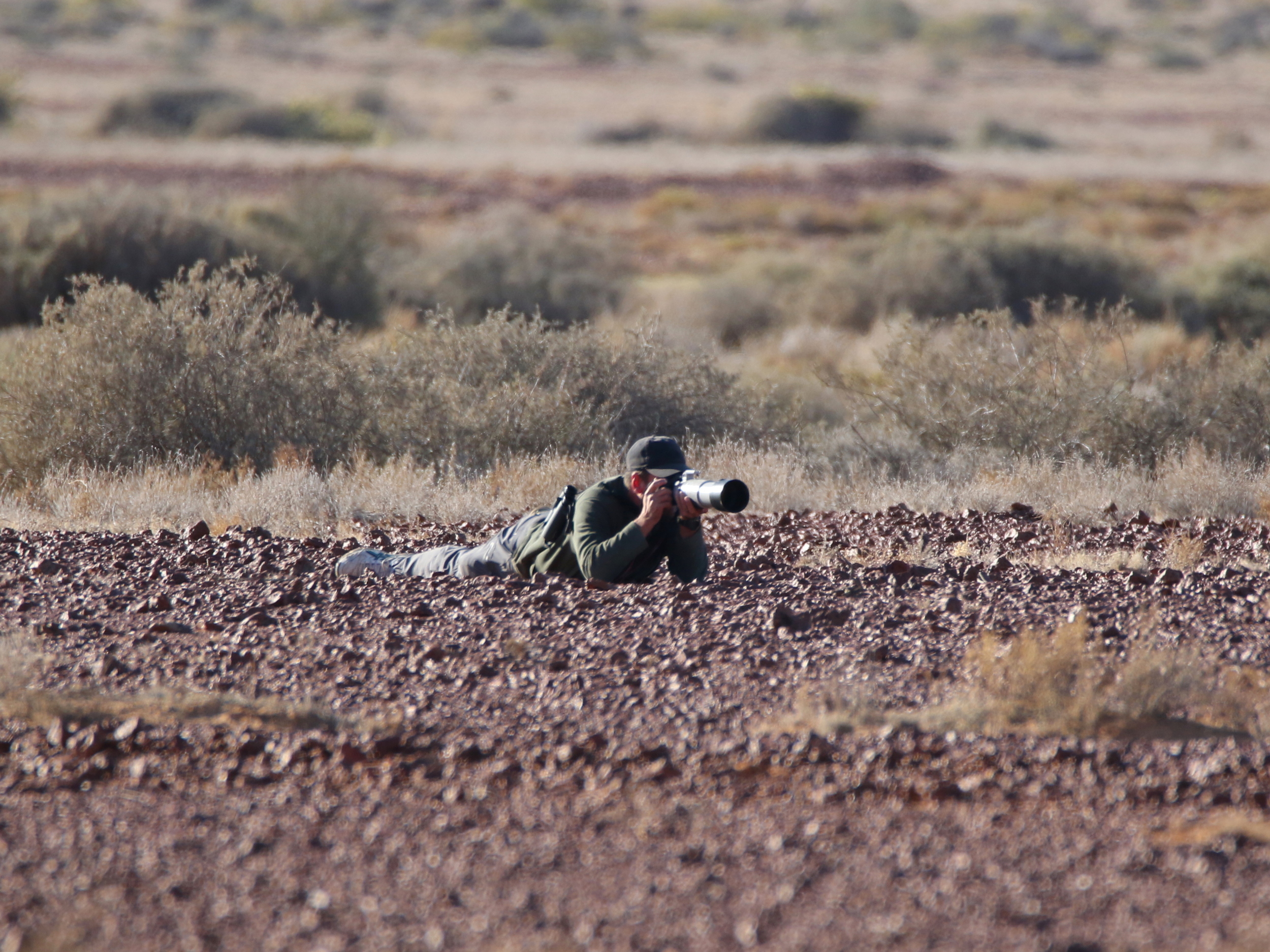

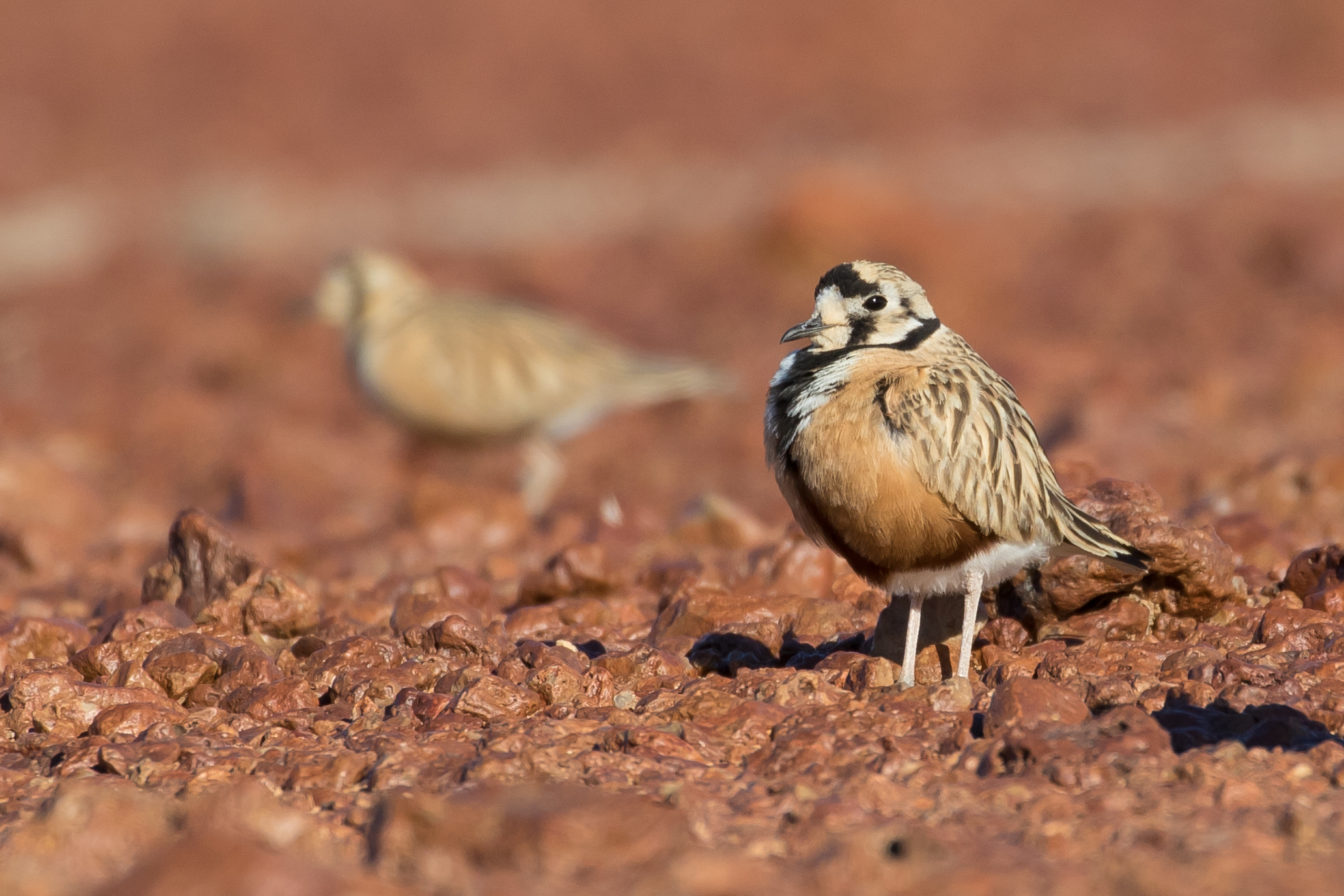
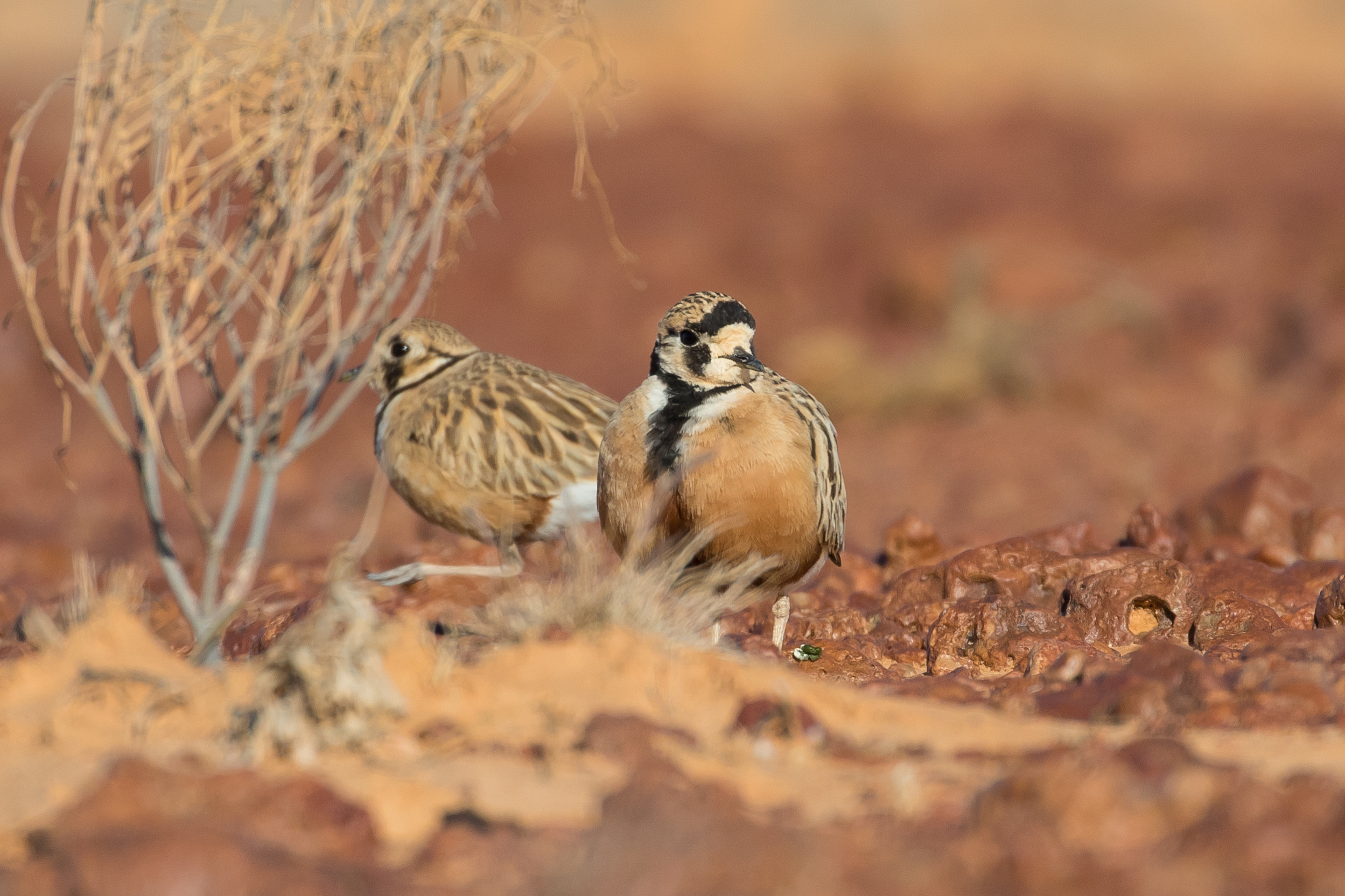
We picked up a White-winged Fairywren and Red-capped Robin at another random stop where we were trying for chats and whiteface (unsuccessfully), a small flock of Budgies flew over and Paul spotted another group of around 8 Inland Dotterel on the gibber.
Back at Mungerannie by 8.30 we ate breakfast, packed our camp away, refueled, and pointed the Kluger north once more.
At Mirra Mitta bore we saw the steam from the bore-head and pulled off the track to bird by the dam for half an hour or so. Just a few days later a chap on a 4WD expedition actually fell into the bore. His mates pulled him out but not before he’d incurred 2nd degree burns to 80% of his body from the 85deg bore water. Luckily his mates also had an emergency radio beacon to call the RFDS who airlifted him to Adelaide, lucky to be alive!
It was a less eventful stop for us, thankfully. Orange Chats scuttled around on the ground and in the reeds, while Black-faced Woodswallows swooped above and seemingly dozens of Willie Wagtails scolded us. A group of 4 Brolgas, two adults and 2 sub-adults were very confiding, strolling around casually and catching yabbies in the creek below the dam overspill. About 500m on the water trickles steadily out across the Birdsville Track and the pond by the roadside held a Freckled Duck, numerous Grey Teal, a few Pink-eared Duck and a couple of Red-necked Avocet.
At another small wetland we found around 100 Little Corella, 20 Pink-eared Duck and even greater numbers — maybe 200-300 — of Black-tailed Nativehens (or Turbochooks as they are colloquially known).
The morning had disappeared and we had still not seen a Gibberbird, despite driving through 100s of km of apparently good habitat. The unusual shine on the gibber stones gives them a weird quality that if looking into the sun the landscape appears dark grey, while looking away it takes on a rich red-brown and we decided we needed photos of this interesting phenomenon. At one somewhat random spot Paul suggested we stop for the pictures, and as soon as he opened his door he called to me: “I’ve just flushed a chat. I’m pretty sure it’s a Gibberbird”. For a bright yellow bird in a red desert setting, it took some tracking down, but once we’d found it, its upright stance on the gibber was a diagnostic give-away. We followed it for a while trying for photos but it always kept a good distance and we left with decidedly mediocre record shots in the heat-haze of 1.30 in the afternoon.

Now we had seen one, we saw several more easily — though still evading decent photos — as we pressed further north driving more or less continuously for 2 hours to our final birding spots of the day for two of the Birdsville’s specialty birds.
Our first stop was 91km south of Birdsville, to one of the few spots on the main track where the fringes of Goyder Lagoon encroach on the route. The old route, or so-called Inside Track, takes a more direct northerly direction and is known as the best site for one of Australia’s most enigmatic and difficult birds: Grey Grasswren. However the southern turnoff to the Inside Track had an ominous and unmissable “Road Closed” sign as we passed it so it was just as well we had this backup on the main track. Unlike much of the surrounding gibber, sand, saltbush and canegrass we had passed through, this small area is dominated by lignum that grows in the usually dry, sandy creek-beds and tentacles of the lagoon. It is the favoured habitat of Grey Grasswren.
Our main plan was the try this site early morning tomorrow, but with a bit of time up our sleeves we’d decided to check it out this afternoon on the off chance. Sadly it was devoid of Grasswrens. It was also, seemingly, devoid of all birdlife and we left after 30min not having seen or heard a single bird of any kind!
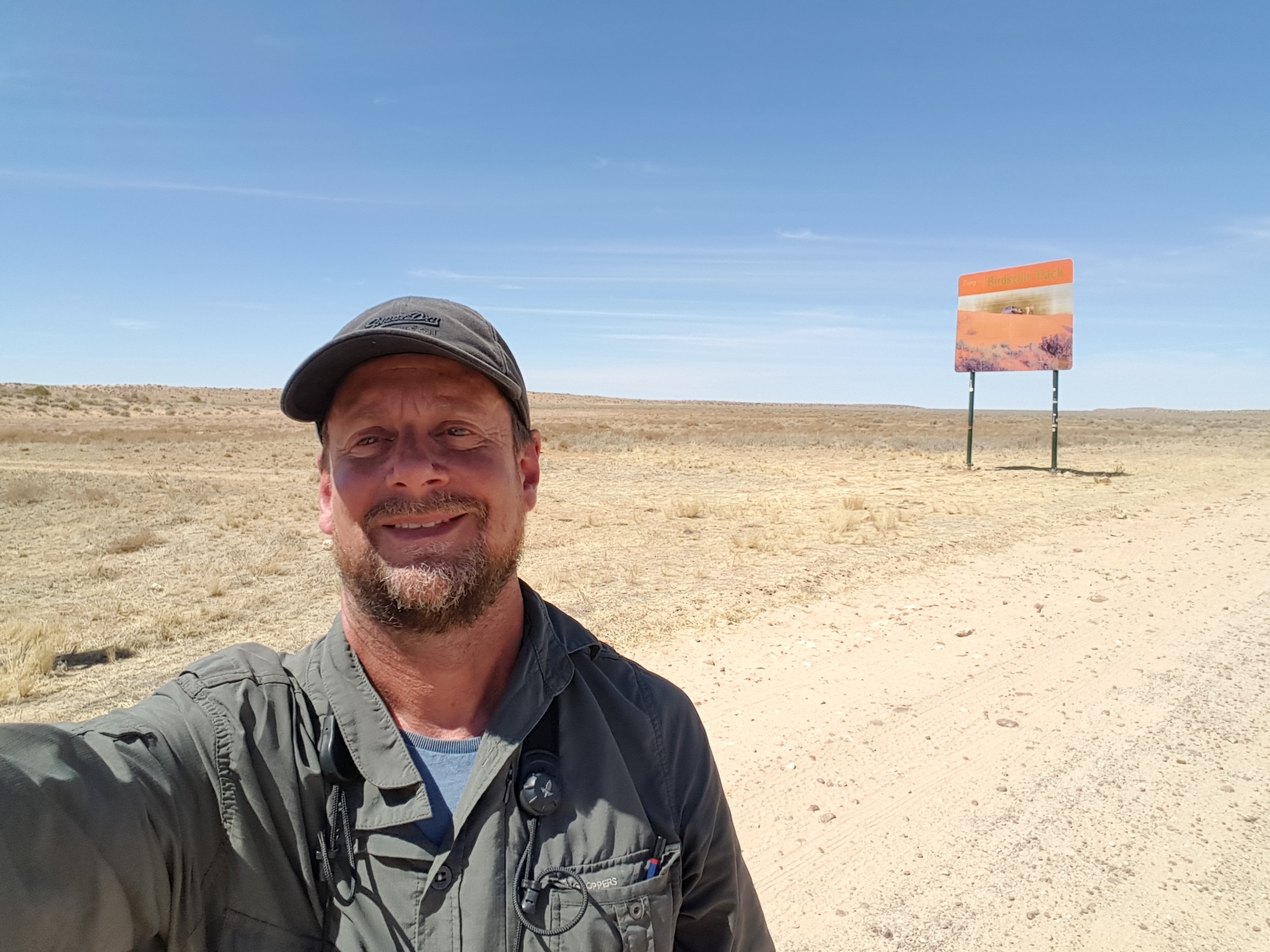
Instead we bombed south 27km to the turnoff to Pandiburra Bore and made our way 20km along the dunes and across the gibber until we could see steam rising from the borehead. An amazingly rich wetland has formed here from the bore overflow and we spent the final hours of the day (and some of the evening) here enjoying the richest diversity of the trip so far.
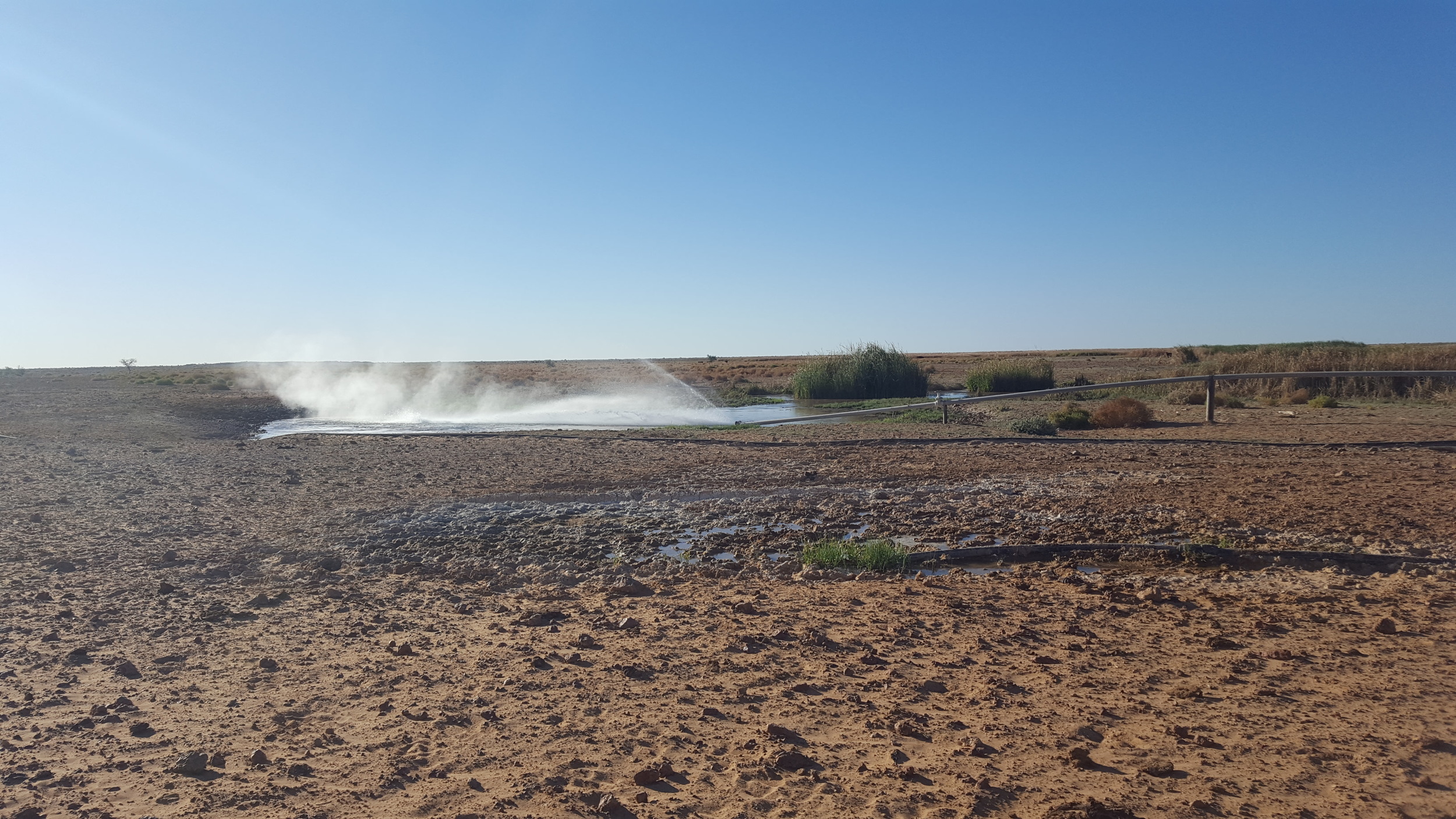
We walked along the eastern side noting Orange Chats (each of which we scrutinized hoping for the much rarer Yellow), several Black-fronted Dotterel, a pair of Red-necked Avocets, Australian Reed Warblers chuntered from the reedbed and a number of Purple Swamphen. A raptor cruising over a distant reedbed seemed to be a Spotted Harrier (we debated the ID at the time, and again when we returned, a streaked, not spotted breast confusing us – finally we realised that the dark wingtips are diagnostic of Spotted and this was an immature bird, looking disarmingly like a Swampie). As it disappeared behind the reeds a large flock of birds burst up and we realized there were Flock Bronzewings in the distance. Spooked by the harrier, they flew a long way, disappearing over a dune more than a km away. But then another flock erupted, then another, living up to their name!
The harrier had caught something but was soon hassled out of its feed by an aggressive Brown Falcon, and these two were shortly joined by a Black Falcon for a veritable raptor-fest.
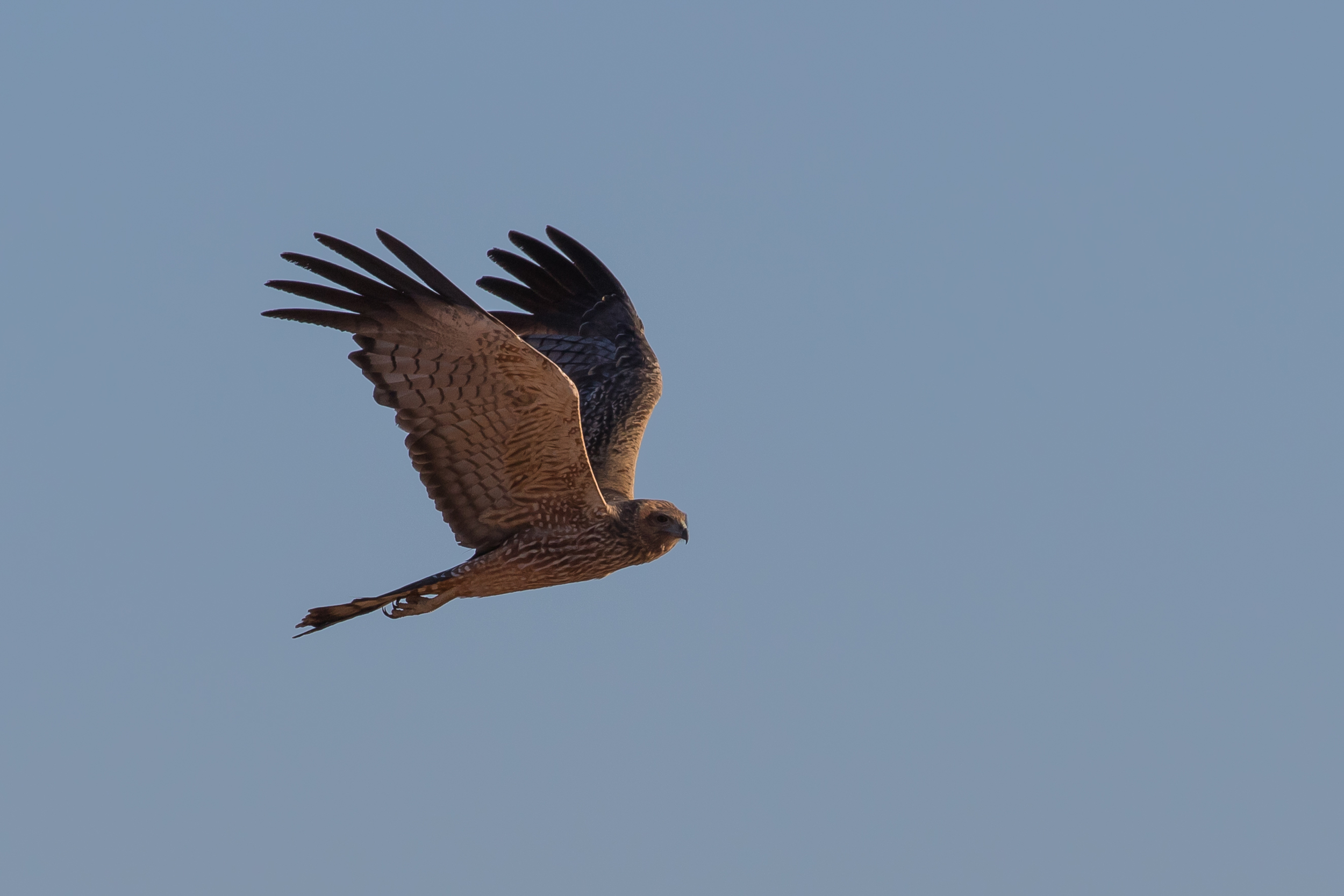
We walked back towards the bore and tried the western edge. Another chat posed on the reeds and I thought I saw a white iris, so I fired off some “banker” shots to review later. I then promptly forgot all about this bird because all of a sudden we had more Flockies – several hundred of them, cruising past in the glorious evening sunlight. Mostly they were into the sun but I willed a few of them to detour east of us so we could get the light behind us and a few obliged. We were even able to track down a flock on the deck, having their evening drink.






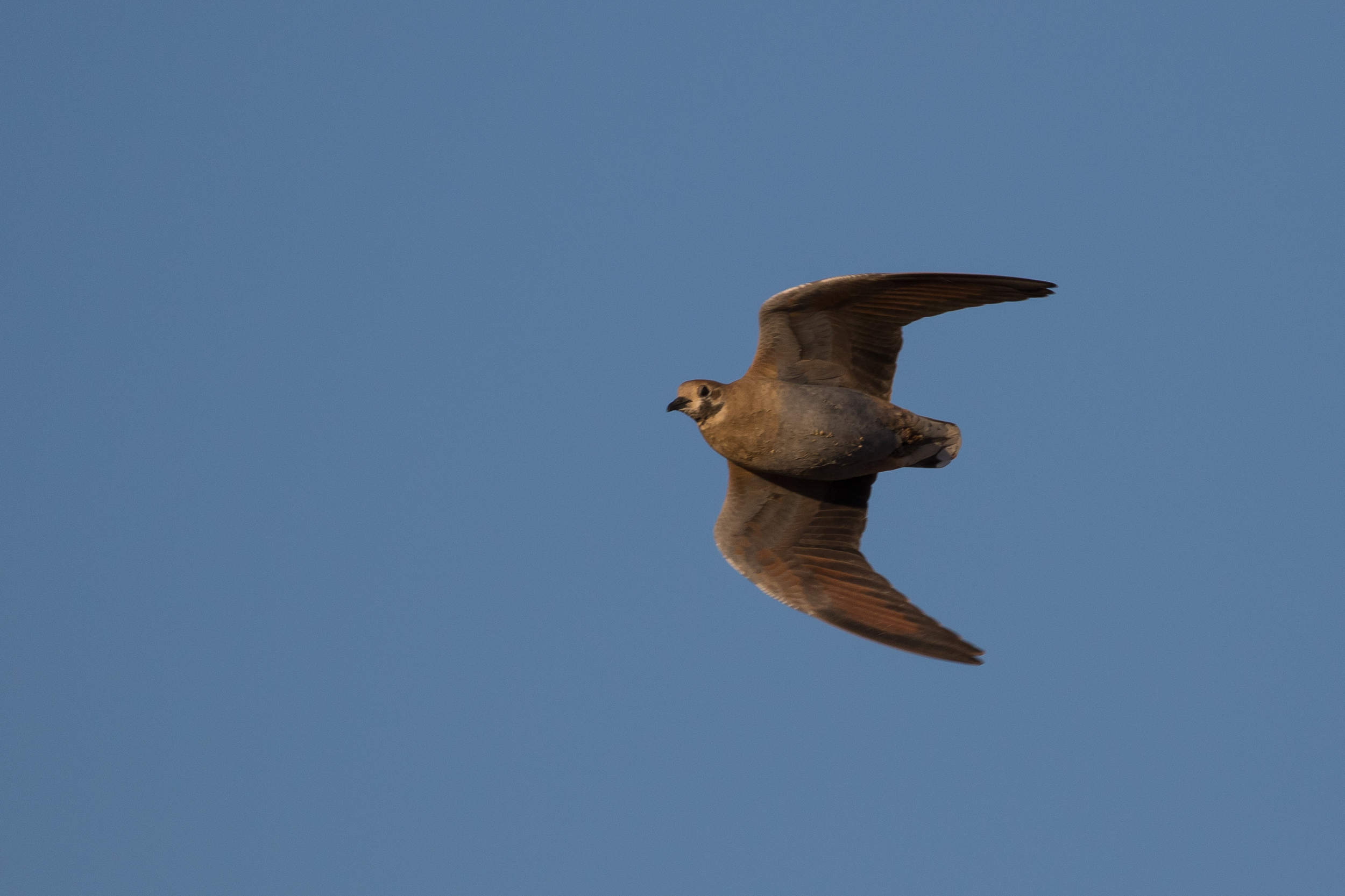
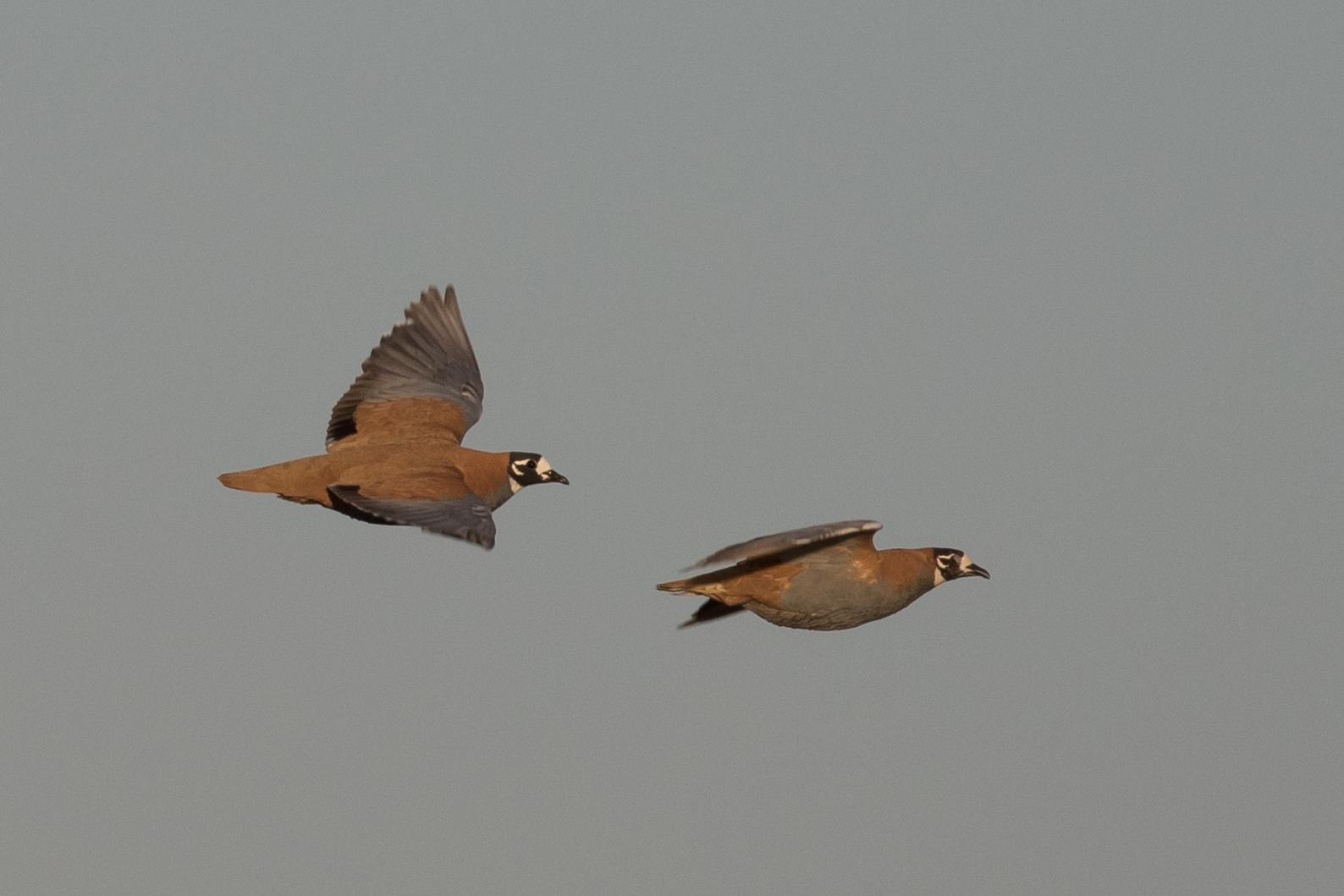
Scanning to the north I was also able to pick up an Australian Pratincole elegantly swooping, tern-like on long pointed wings above the marsh, then a Hobby put in an appearance, like its bigger cousins cashing in on the density of food here at the bore. A small group of Sharp-tailed Sandpipers flew over, and then Paul, in the dimming light, picked out our first unequivocal Yellow Chat – a very pale, white looking young male just starting to show the diagnostic black breast crescent. We counted around 4 by the time it was too dark to see any more.
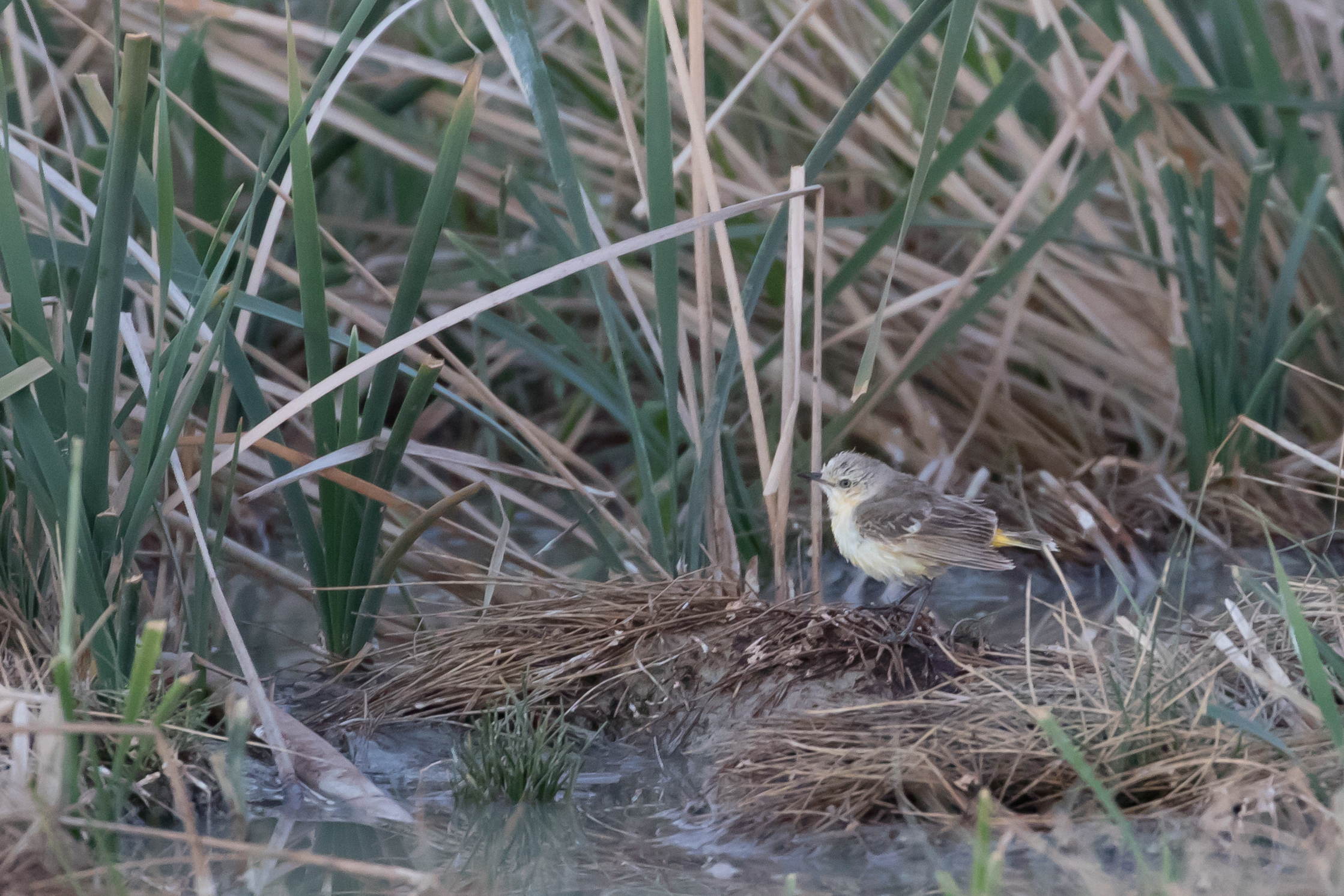
We made our way back to the car by torch-light, on a suggestion from Dave Harper hoping for a grass owl. One bird that flew low over the grass on rounded wings had me going until I realised it was a Masked Lapwing. I also saw one or two “legit” night-birds in my torchlight but nothing identifiable until we were almost back to the car. A retinal reflection grabbed my attention and I was able to follow a bird flying up above the reed then back down. With Grass Owls on the brain I initially misidentified it, but the more I watched its repeated short up and back flights, the more it dawned on me that this was not owl behaviour — it was in fact a nightjar. By holding the bins and torch together I was able to get a magnified view in the torch-light and see the diagnostic white-wing patches of Spotted Nightjar.
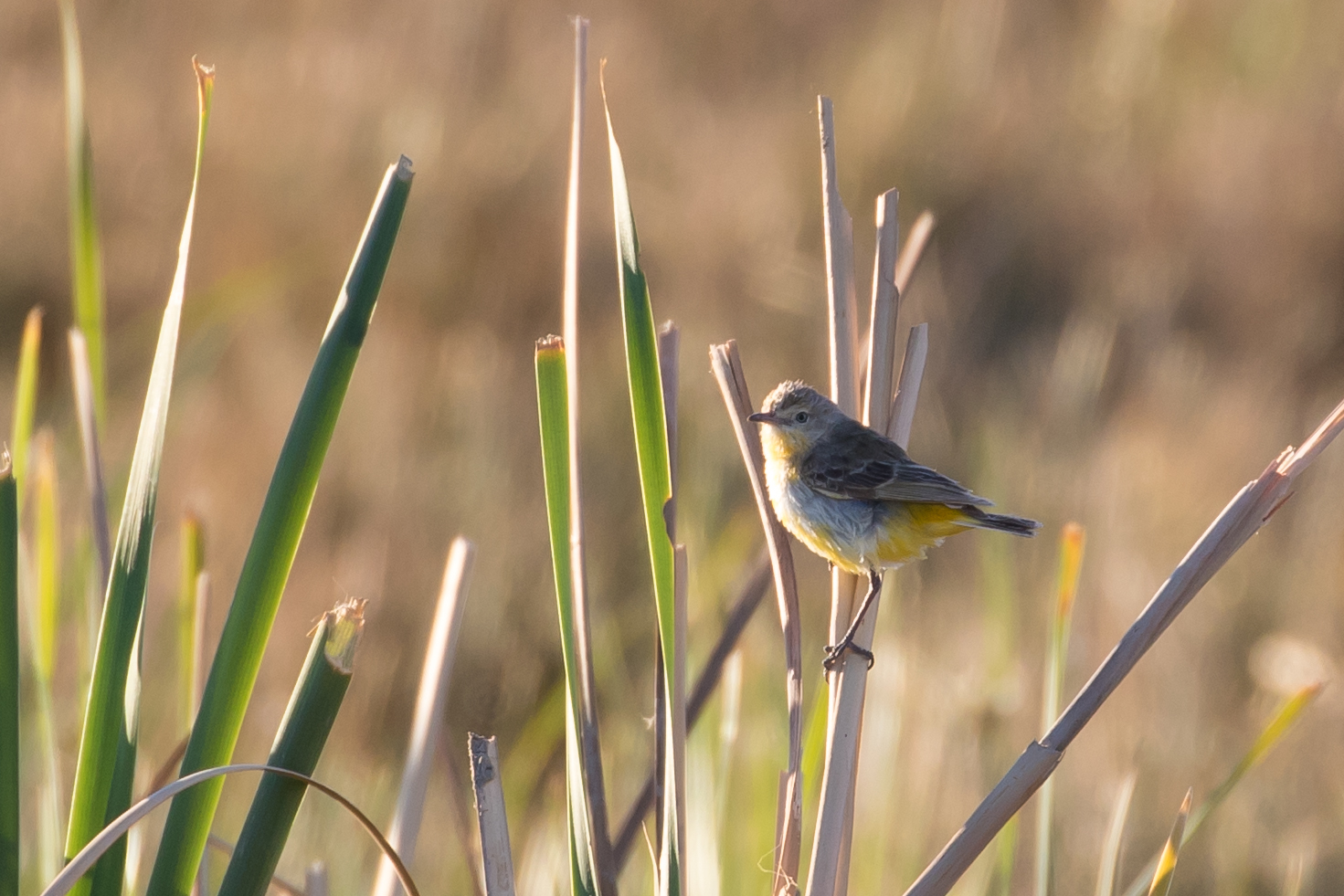
to be continued…

